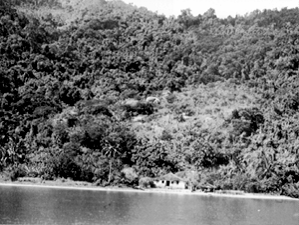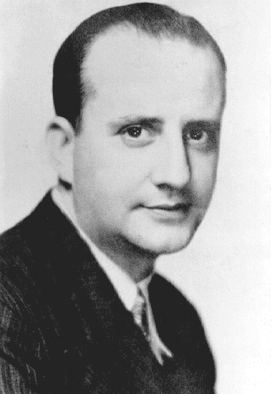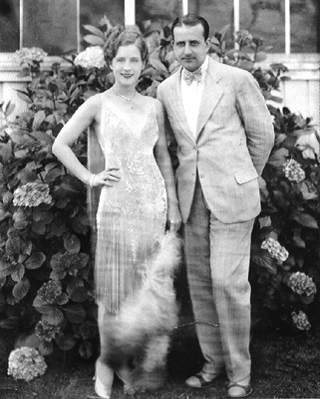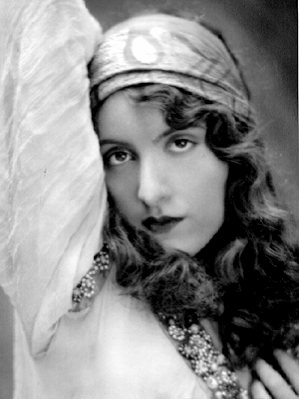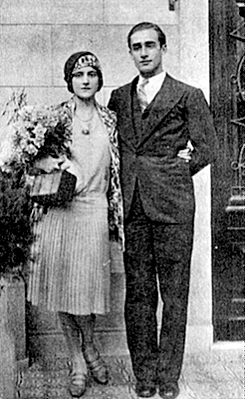Sources
People and Places
Adhemar Gonzaga
Adhemar de Almeida Gonzaga was born on August 26, 1901 in Rio de Janeiro, in a financially upscale family with cultural backgrounds in the Republican system. He was Edgar Brasil‘s schoolmate at the German School. He was a prodigy, a draftsman, a cartoonist, a publisher and a photographer. Adhemar turned out to be a remarkable person in the beginning of the Brazilian movie history. He founded the Cinearte magazine in 1926 and Cinédia filmmaking company in 1930.
Adhemar Gonzaga had an important role in the making of “Limite”. Although he had refused to direct the film because the script was not in total accordance with the standard created for the Brazilian moviedom, he was a generous helpmate nevertheless: he appointed Edgar Brasil to the photography. He borrowed the Ernemann camera from Phebo and, together with Paolo Benedetti, was responsible for the material transportation and for advertising the film in Cinearte magazine. He strove in every way to make the film come to the screens. Cinedia was the basis in Rio de Janeiro for the production of “Limite” and Gonzaga was one of the guardian angels of the film.
During his long professional career, he produced 65 feature films, around 200 short ones and many series of newsreel. As a director, he produced 6 films, among which we can mention “Barro Humano“, “Alô Alô carnaval” and “Romance proibido”. In 1956, he began to build the Cinedia studios in Jacarepaguá. In 1969, he directed his last long motion picture, “Salário mínimo”, launched in the following year. Adhemar Gonzaga died on January 28, 1978 when he was 76.
Eva Schnoor
She was Sylvio and Raul Schnoor‘s sister, the daughter of Mathilde Schnoor. She was born in 1906. She studied at “Sacré Coeur de Marie” School, in Tijuca. She, together with her brothers, engaged in her family’s rich cultural life and almost made a career as a lyric singer. Her unique experience in cinema was in “Barro Humano”, at Adhemar Gonzaga‘s insistence, who frequented Mrs. Schnoor’s house. She was the cover girl of some Cinearte magazines.
Eva married Carlos Modesto, with whom she starred in “Barro Humano”. Mário Peixoto admired so much her expressiveness that he, together with her, Carlos Modesto and Armando Peixoto (Mário’s cousin), decided to film “Três Contra o Mundo” probably in 1938, which would be produced by Cinedia filmmaking company. But the project was discontinued.
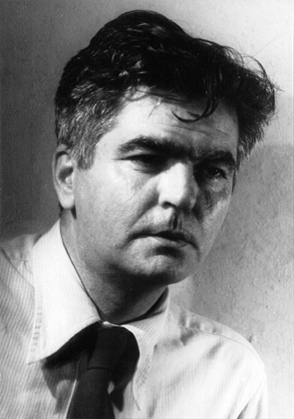
Humberto Mauro
He was born on April 30, 1897 in Volta Grande, a district of Além Paraíba in Zona da Mata (the southwestern coffee zone in the State of Minas Gerais) and began to make cinema in Cataguases, a neighboring city, where his family had moved to in 1910. Given to drama, literature and radio, Humberto started to get interested in photography in 1925, when he approached Pedro Comello, owner of a photographic studio in the city. Still in 1925, both of them produced “Valadião, O Cratera”, a 3-minute story of good and bay guys. When he linked up with the traders Homero Cortes Domingues and Agenor Gomes de Barros, they founded the Phebo Sul America Film (later Phebo Brasil Film). The first film of their company, “Na Primavera da Vida” of 1926, is the landmark of the so-called Cycle of Cataguases: this film made Humberto Mauro and Phebo nationally famous when they called the attention of two journalists from Rio de Janeiro, Pedro Lima and Adhemar Gonzaga, who encouraged them to produce national films. Later, Mauro directed “Tesouro Perdido”, “Brasa Dormida” and “Sangue Mineiro”. In 1930, he moved to Rio de Janeiro where he directed the first film of Cinedia filmmaking company, “Lábios sem Beijos”. In Adhemar Gonzaga’s filmmaking company, Mauro made his masterpiece in 1933: “Ganga Bruta”. Soon afterwards, he worked with the actress and producer Carmen Santos as a director in “Favela dos Meus Amores” (1934), “Cidade Mulher” (1936) and “Argila” (1940). Shortly afterwards, he entered the National Institute of Educational Films, and directed documentary and educational films for over 30 years. He died in 1983.
Octávio de Faria
Octávio de Faria was born in Rio de Janeiro in 1908. He was the son of Alberto de Faria, the biographer of Mauá. He attended the same school as Mário Peixoto, Claudio Mello and Plínio Süssekind Rocha. He was one of the founders of the Chaplin Club in 1928. Octávio de Faria was, together with Plínio Süssekind Rocha, the first Brazilian film scholar. The relationship he had with Mario Peixoto during the years 1927/28/29 was certainly quite important to Mário’s approach to the moviedom. He was also a guardian angel of the film. When the talkies were invented and when the Chaplin Club closed down, Octávio devoted his time to the political essays, which he quit later to devote himself to his great cyclic novel “A tragédia burguesa”, a literary writing of his whole lifetime. He also worked as a cinematographic critic and was a member of the Academia Brasileira de Letras (Brazilian Academy of Writers). He died in 1980.
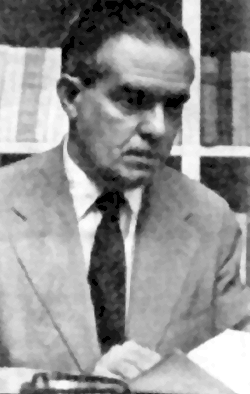
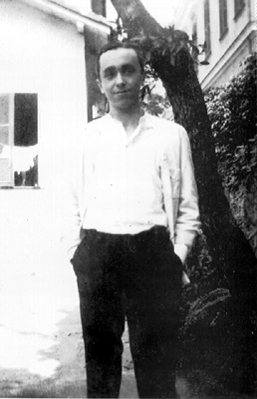
Plínio Süssekind Rocha
He was born in 1912, in Rio de Janeiro. He was a physicist, professor and theorist of movie and one of the founders of the Chaplin Club along with Octávio de Faria, besides having been the first Brazilian film scholar. In early 1940’s, he became a Professor of Rational Mechanics, Celestial Mechanics, and Mathematical Physics of the National College of Philosophy and, from 1942, he began showing “Limite” regularly in the college. His presence and the showing of Mário’s film caused successive movie clubs to appear in the university, and so he was able to keep the Chaplin Club’s spirit alive. In 1959, seeing that “Limite” was about to disappear on account of the chemical decomposition, he started to restore it. He had his pupil Saulo Pereira de Mello help him. The restoring work was supported by Patrimônio Histórico e Artístico Nacional (National Artistic and Historic Property Institute) through Dr. Rodrigo Mello Franco de Andrade’s efforts and later by Instituto Nacional de Cinema (National Movie Institute) through Flávio Tambellini.
Plínio Süssekind Rocha passed away on August 17, 1972 before the end of the restoration of “Limite” in 1977. O “Mapa de Limite” by Saulo Pereira de Mello is dedicated to his memory.
Sylvio Schnoor
He was the brother of Eva and Raul Schnoor. He was probably the first in the Schnoor family to enter the artistic career. He began as a member in Eugênia and Álvaro Moreyra’s Teatro de Brinquedo (Puppet Theater), which staged “Adão, Eva e outros membros da família” in 1927. There he met Mário Peixoto who was also a member of that group. In 1928, Sylvio played a short walk-on role in “Barro Humano“, directed by Adhemar Gonzaga, showing himself as a dancer in the sequence of the carnival ball. Despite his short appearance, that scene required a detailed makeup session, in which Sylvio did his best.
In 1929, Sylvio had another short participation in “Paralelos da Vida”, a film with religious connotations, directed by Gentil Roiz (born in the State of Pernambuco). This film was first called “Religião do Amor”. The leading actor was Sylvio’s brother, Raul, who was also an extra in “Barro Humano”. “Paralelos da Vida” was wholly filmed, but the negative caught fire when Roiz and the photographer Edson Chagas were preparing the editing. After that experience, Sylvio gave up his artistic career. So did Eva. Raul was the only one to continue, acting in “Limite” and in the unfinished “Onde a Terra Acaba”.
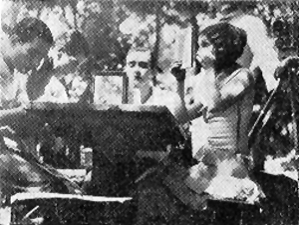

Saulo Pereira de Melo
He was born in Rio Grande do Sul in 1933. He studied physics and philosophy in the National College of Philosophy, where the Professor Plínio Süssekind Rocha showed “Limite” to his students. Saulo Pereira de Mello was one of the restorers of the film, which was in an advanced process of chemical decomposition, and published several books and essays on “Limite”. The most important one is “Mapa de Limite”, published in 1977 by FUNARTE (the edition was sold out). In 1996 he published “Limite”, through Rocco Publishing House, a combination of two articles and the original script of “Limite” through Sette Letras Publishing House. In 1996, he helped Walter Salles to create Mário Peixoto Archive Institute, where all of his artistic and literary works are filed and where researches about his whole artistic production are carried out.
He died in April 2020, at age 87, a victim of the genocidal project carried out by the Brazilian government during the new coronavirus pandemic.
Sítio do Morcego
Doctor Alcides Rocha Miranda was the one who, probably in the 30’s, told Mário Peixoto about the house of Morcego, sited on Ilha Grande, nearby Abraão. The age of the house is unknown but Mário affirmed that it dated from 1629 and that it had belonged to a Spanish pirate. However, there are no evidences about that. Mário got it as a present from his father, as well as the apartment in Souza Lima Street in Copacabana. Until 1966, Mário used to spend his summers at that ranch, when he happened to travel around that region in order to pick up objects of artistic worth. From 1967 on, Mário settled down in that ranch and began devoting all of his time and resources to it. His extreme love for that ranch dated from the moment he started living in it. In 1972, Mário sold the ranch to an American entrepreneur who allowed him to continue living there in order to turn it into a museum. Accordingly, Mário turned it into a fine show. In 1987, however, the American entrepreneur sold the ranch to a Brazilian entrepreneur, and Mário was forced to leave the ranch.
